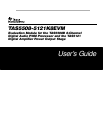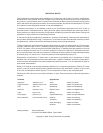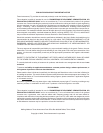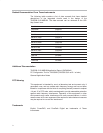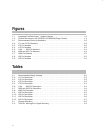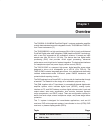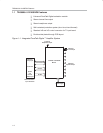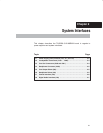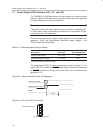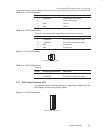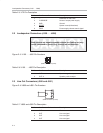
1-1
Overview
Overview
The TAS5508−5121K8EVM PurePath Digital™ customer evaluation amplifier
module demonstrates two audio integrated circuits, TAS5508B and TAS5121,
from Texas Instruments (TI).
The TAS5508BPAG is a high-performance 32-bit (24-bit input) multichannel
PurePath Digital pulse width modulator (PWM) based on Equibit™ technology,
with a new fully symmetrical AD modulation scheme. It accepts an input
sample rate from 32 kHz to 192 kHz. The device also has digital audio
processing (DAP) that provides 48-bit signal processing, advanced
performance, and a high level of system integration. The device has interfaces
for headphone output and power supply volume control (PSVC).
The TAS5121DKD is a compact, high-power, digital amplifier power stage
designed to drive a 4-Ω loudspeaker up to 100 W (10% THD+N). The
TAS5121DKD contains integrated gate drivers, four matched and electrically
isolated enhancement-mode N-channel power DMOS transistors, and
protection/fault-reporting circuitry.
The DKD package has a PowerPAD™ on the top side for heat transfer through
a heatsink. The heatsink in this design is for evaluation purpose only.
This EVM, together with a TI input board, is a complete 8-channel digital audio
amplifier system, which includes digital input (S/PDIF), analog inputs,
interface to PC, and DAP features, such as digital volume control, input and
output mixers, auto mute, equalization, tone controls, loudness, dynamic
range compression, and PSVC output. There are configuration options for
stereo line level output, stereo headphone output, and power-stage failure
protection.
This 7.1 system is designed for home-theater applications, such as A/V
receivers, DVD minicomponent systems, home theater in a box (HTIB), DVD
receivers, or plasma display panels (PDPs).
Topic Page
1.1 TAS5508−5121K8EVM Features 1-2. . . . . . . . . . . . . . . . . . . . . . . . . . . . . . . .
1.2 PCB Key Map 1-3. . . . . . . . . . . . . . . . . . . . . . . . . . . . . . . . . . . . . . . . . . . . . . . . .
Chapter 1



